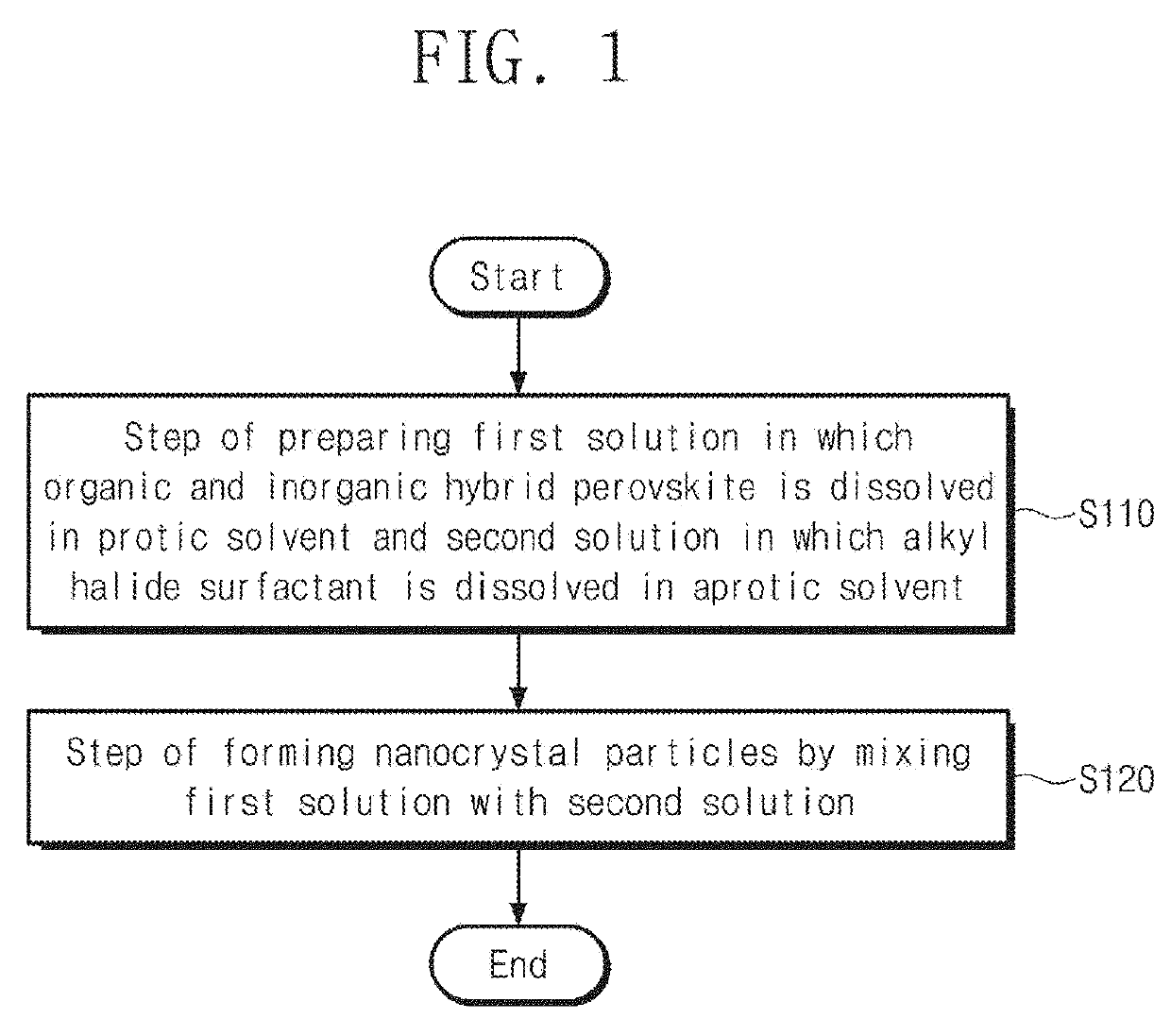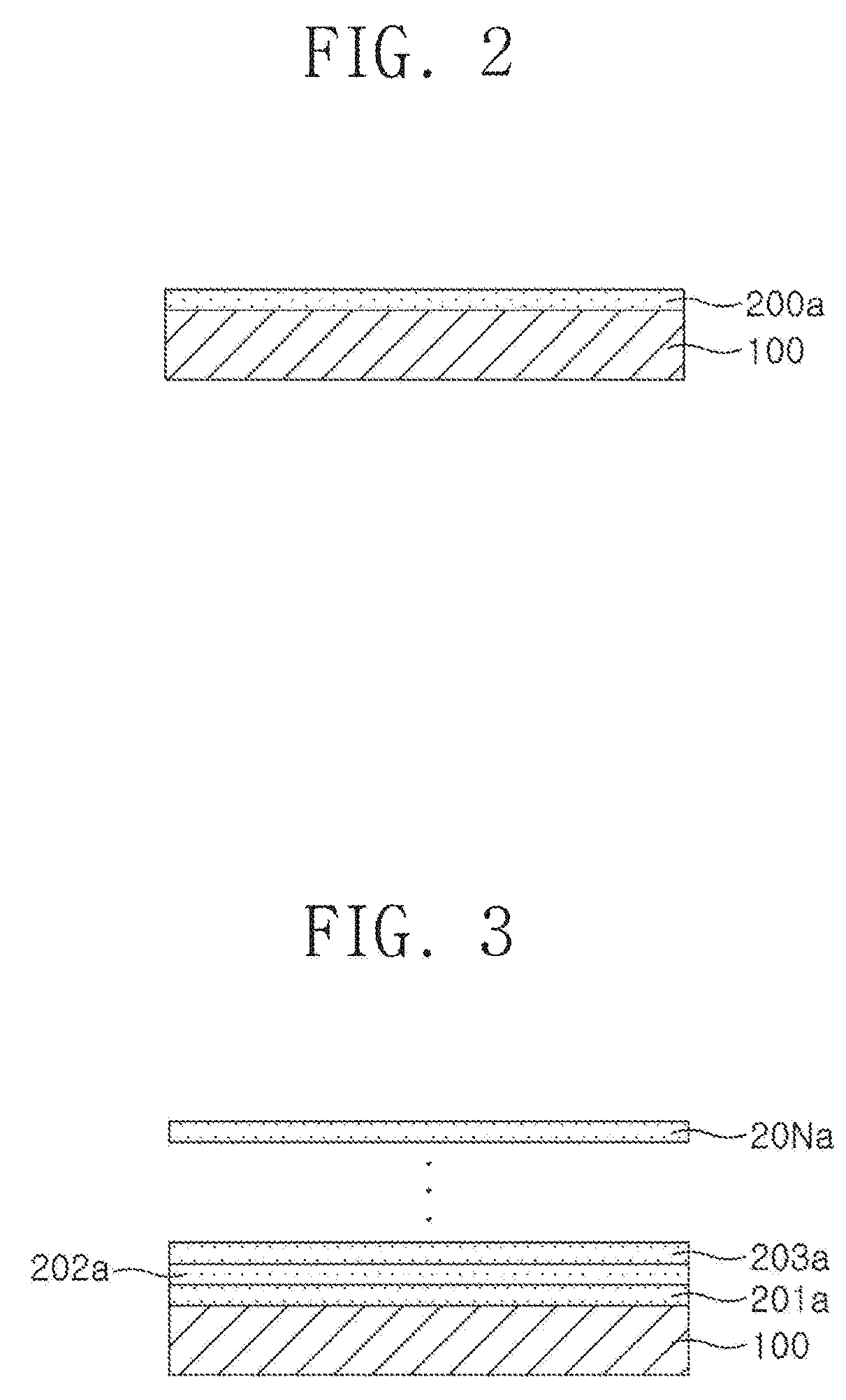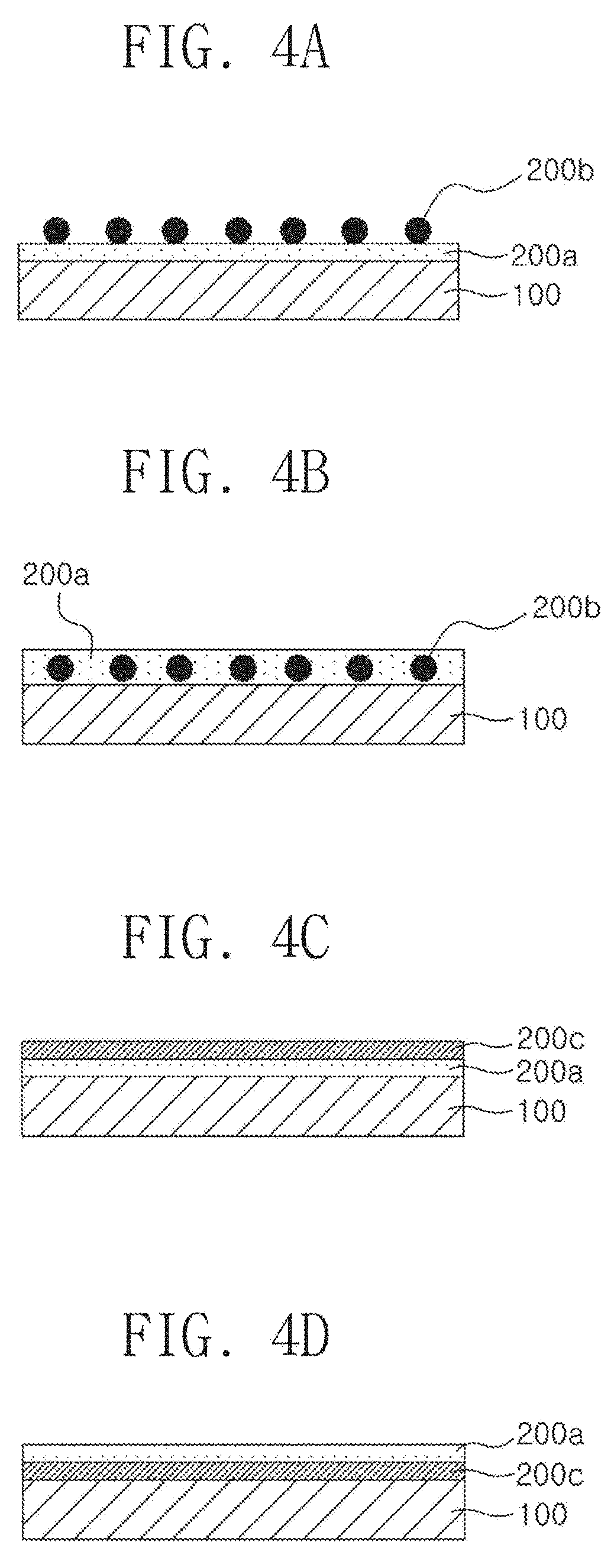Light-emitting layer for perovskite light-emitting device, method for manufacturing same, and perovskite light-emitting device using same
a technology of light-emitting devices and light-emitting layers, which is applied in the direction of organic semiconductor devices, luminescent compositions, lead halides, etc., can solve the problems of difficult uniform control of the size of the quantum dots, the wide spectrum of existing organic light-emitters, and the intrinsic limitations of organic light-emitters and inorganic quantum dots light-emitters, etc., to achieve the effect of improving the luminescent efficiency and luminance of the devi
- Summary
- Abstract
- Description
- Claims
- Application Information
AI Technical Summary
Benefits of technology
Problems solved by technology
Method used
Image
Examples
manufacturing example 1
Manufacture of Solution Including Organic-Inorganic-Hybrid Perovskite Colloidal Nanoparticle
[0270]A solution including an organic-inorganic-hybrid perovskite colloidal nanoparticle including an organic-inorganic-hybrid perovskite nanocrystal structure according to an embodiment of the present invention was formed. The colloidal solution was formed through an inverse nano-emulsion method, or reprecipitation method, or hot injection method.
[0271]Particularly, organic-inorganic-hybrid perovskite was dissolved in a polar solvent to prepare a first solution. Here, dimethylformamide was used as the polar solvent, and (CH3NH3)2PbBr4 was used as the organic-inorganic-hybrid perovskite. Here, the used (CH3NH3)2PbBr4 was prepared by mixing CH3NH3Br with PbBr2 at a ratio of 2:1.
[0272]Also, a second solution in which an alkyl halide surfactant is dissolved in a non-polar solvent was prepared. Here, toluene was used as the non-polar solvent, and octadecylammonium bromide (CH3(CH2)17NH3Br) was us...
manufacturing example 2
Manufacture of Light Emitting Layer
[0274]First, a 10 wt % 3-mercaptopropionic acid (MPA, Aldrich) ethanolic solution was spin-coated on a glass substrate to form an anchoring agent layer. After the excess MPA is removed through washing using ethanol and chloroform, the perovskite nanocrystal manufactured by Manufacturing Example 1 was spin-coated on the anchoring agent layer to form a perovskite nanocrystal layer (2500 rpm and 20 s).
[0275]The perovskite nanocrystal that is not anchored through the chloroform spin-costing (2500 rpm and 20 s) was removed. To adjust a thickness of the perovskite nanocrystal layer, spin-coating (2500 rpm and 20 s) of a 1 wt % 1,2-ethanedithiol (EDT) / ethanol solution having 250 μL and spin-coating (2500 rpm and 20 s) of the perovskite nanocrystal solution was spin-coated (2500 rpm and 20 s) were repeatedly performed to form the light emitting device.
manufacturing example 3
Manufacture of Light Emitting Layer
[0276]First, a trioctylphosphine oxide (TOPO) solution and a trioctylphosphine (TOP) solution was added to the perovskite nanocrystal solution manufactured by Embodiment 1 to substitute a ligand of the perovskite nanocrystal with TOPO and TOP. Then, N,N′-diphenyl,N′-bis(3-methylphenyl)-(1,1′-biphenyl)-4,4′-diamine(TPD) was mixed with the perovskite nanocrystal solution at a ratio of 100:5 (w / w) to manufacture a TPD-perovskite nanocrystal solution. The TPD-perovskite nanocrystal solution was spin-coated (500 rpm 7 s, 3000 rpm, and 90 s) to form a TPD and perovskite nanocrystal layer. Here, the TPD and perovskite nanocrystal was phase-separated while the spin-coating to form a nano thin film including the organic-inorganic-hybrid perovskite nanoparticle including the perovskite nanocrystal structure on the TPD layer.
PUM
| Property | Measurement | Unit |
|---|---|---|
| full width at half maximum | aaaaa | aaaaa |
| size | aaaaa | aaaaa |
| surface energy | aaaaa | aaaaa |
Abstract
Description
Claims
Application Information
 Login to View More
Login to View More - R&D
- Intellectual Property
- Life Sciences
- Materials
- Tech Scout
- Unparalleled Data Quality
- Higher Quality Content
- 60% Fewer Hallucinations
Browse by: Latest US Patents, China's latest patents, Technical Efficacy Thesaurus, Application Domain, Technology Topic, Popular Technical Reports.
© 2025 PatSnap. All rights reserved.Legal|Privacy policy|Modern Slavery Act Transparency Statement|Sitemap|About US| Contact US: help@patsnap.com



